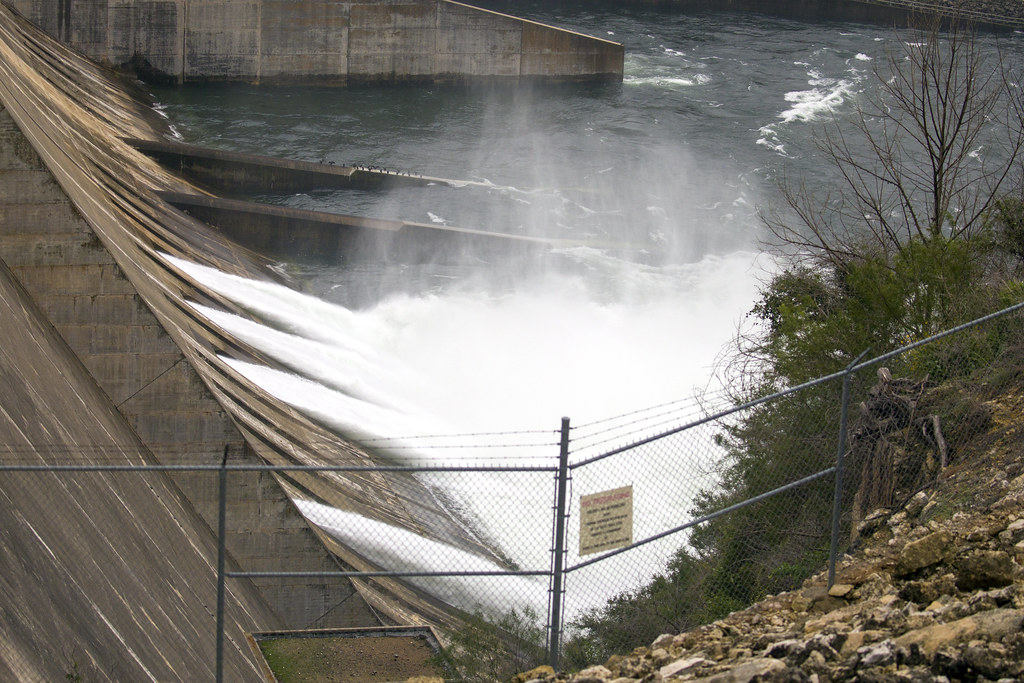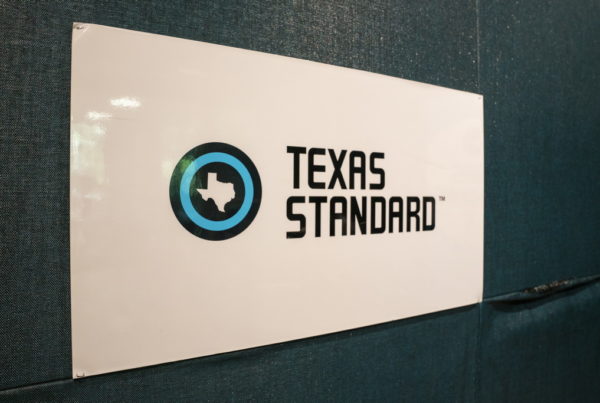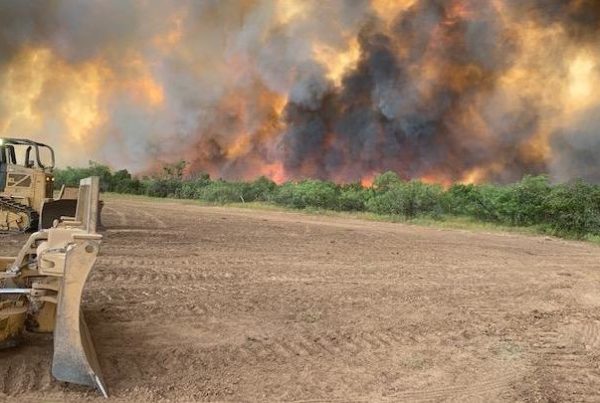From The Texas Observer:
Carson is a community of 22 people in Northeast Texas — just 20 minutes from the Red River. This Fannin County town depends on water. A chief source of recreation is fishing in one of several nearby lakes, and folks here can count on Bois d’Arc Creek to flood several county roads at least once a year.
All that rain makes this ideal country for growing soybeans and raising cattle. That’s what Harold Witcher – or “Thump” – does for a living.
“My great-great-grandfather settled just south of where I am right now at a little community called Allen’s Chapel right after the Civil War,” Witcher says. “I do have 150 acres of farmland that my great-grandfather bought in 1916.”
Witcher also raises cattle on another 300 acres in the eastern part of the county. He’s worked in agriculture most of his 68 years. He credits much of his success to ample rainfall in this part of the state. But the rain that’s helped keep Witcher in crops and cattle for so long will be his undoing. Soon, Witcher’s land, along with his business, will be underwater.
That’s because Fannin County is the future home of the Bois d’Arc Lake Reservoir. It will be a 26-square-mile body of water stretching across the central and eastern parts of the county. The projected cost of building the reservoir is $1.6 billion. It will be the first major reservoir built in Texas in nearly three decades. The North Texas Municipal Water District is building it.
“We need enough supply to take us through what is the equivalent of the drought of record. In our part of the world, that would be seven years in duration. It is a lot of water that’s needed,” water district Deputy Director Mike Rickman says.
The agency plans to pipe water from the reservoir 40 miles southwest to McKinney starting in 2022. McKinney is one of Dallas’ booming suburbs.
“Frisco, Rockwall, McKinney, all of those are very fast-growing cities,” Rickman says. “We need to make sure we have enough water to meet those growing needs.”
But some residents of Fannin County, including Witcher, will pay a high price to provide that water — namely their homes and land that’s been in their families for generations.
“My issue or problem with this reservoir here is that I’m going to lose all of my property, every bit of it, to the reservoir, including my home,” Witcher says. “A lot of the people in urban areas I’ve talked to about this that were raised in the urban environment, they say, ‘Well, just go get yourself another place.’ That is easier said than done; you just can’t go replace something that you’ve worked at your whole life. It’s not like going and buying a new house. It’s not the same.”
The Bois d’Arc project is one answer to a persistent question in Texas cities: Where will we get our water in the future? Historically, Rice University professor of environmental law, Jim Blackburn, says water providers have looked to rural areas to fill that need.
“Historically, reservoirs have been located in rural areas, and there’s no question that there’s been disproportionate impact of the urban areas on the rural areas just because you’re not going to be building reservoirs where there’s a lot of people who have already settled,” Blackburn says.
The Bois d’Arc project isn’t the only one where urban interests appear to trump rural ones. The North Texas Municipal Water District is pursuing another major reservoir project in East Texas, called the Marvin Nichols Reservoir. Homes and farmland will be flooded to make a lake there, too. In Wichita Falls, city leaders want to build a new reservoir in rural Clay County, despite an outcry from ranchers who stand to lose their property.
In Fannin County, public opinion seems divided on Bois d’Arc Lake. County Commissioner Jerry Magnus’ precinct includes the future reservoir. He says he used to oppose the project. But he’s since come around.
“It’s a boon to Fannin County as far as economic value because it’s gonna bring people who’ve got some money, and it takes money to make money,” Magnus says.
But farmer Paul Vaughn doesn’t see it that way. He says the Bois d’Arc project is simply a ploy to shift the cost of developing urban Texas to rural residents.
“In my personal opinion, the rich get richer and the poor get poorer all the time,” Vaughn says. “Fannin County isn’t gonna gain much off this lake for years to come. You can forget that.”
Either way, there’s nothing Witcher or other affected landowners can do to stop the project. The water district has the power of eminent domain. He and other area landowners who stand to have their land flooded for the reservoir went to court over the matter. Some of them have settled with the district, though they say they are unable to talk about those confidential agreements.
“I fought it for 14 years. I’ve run out of options,” Witcher says.
Witcher says he and his wife plan to move to some land her family owns near Windom, about 20 miles away. He says he will try to start his farming and ranching operation all over again from there — if he lives long enough to do it.
“Thing about it is I’m 68 years old,” Witcher says. “I don’t have a lot of productive time left to get a place back in production.”
More of these fights are expected to crop up as time goes on. The state projects water demand in Texas will rise by 20% by the year 2070. There are plans to build 26 new reservoirs to meet that demand.
















